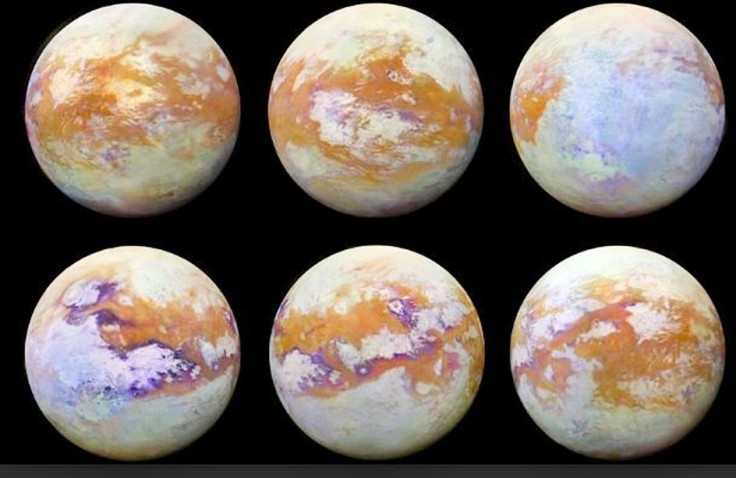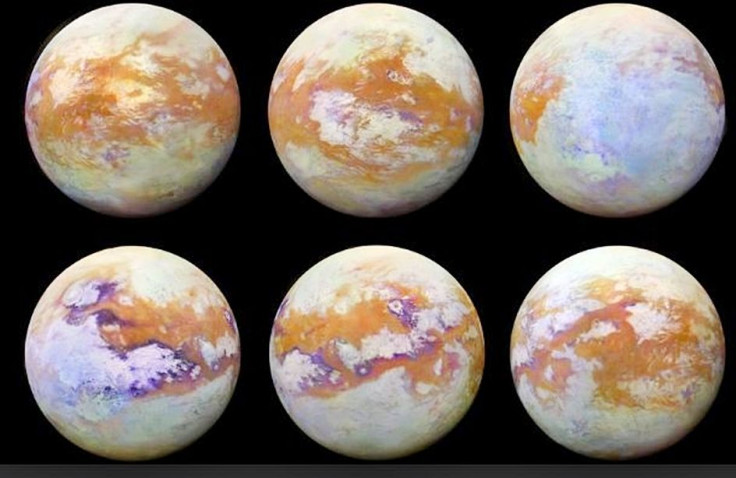Alien Life On Saturn Moon Titan Speculated After NASA Spots Mysterious Structure

Titan, Jupiter’s planet-like moon and its largest, has long been thought to harbor microbial life but not the carbon-based life we have on Earth.
Instead, any living organisms on Titan would have had to adapt to survive on this moon’s icy and rocky surface with its liquid hydrocarbon lakes and cryovolcanoes spewing methane ice into the atmosphere. These things will also have to contend with Titan’s nitrogen atmosphere, its methane clouds and nitrogen-rich organic smog.
Then, there’s Titan's methane cycle, which is analogous to the Earth's water cycle but at the much lower temperature of −179.2 degrees Celsius (−290.5 degrees Fahrenheit).
Titan’s dense opaque atmosphere prevented understanding of its surface until the Cassini-Huygens mission in 2004 provided new information about this moon.
Now news reports claim NASA has discovered a bizarre ice structure on the surface of Titan, fuelling theories of alien life among UFOlogists. The mysterious ice formation stretches nearly halfway across its massive surface.
This ice structure, also called an ice corridor and described as “ribbons of ice,” covers 40 percent of the Titan’s diameter.
"This icy corridor is puzzling, because it doesn't correlate with any surface features nor measurements of the subsurface,” University of Arizona researcher Caitlin Griffith said.
Researchers admit they’re “puzzled” by the latest discovery and are struggling to explain the structure. They claim more research is urgently needed to discover what exactly caused the uncovered ice on Titan's surface.

“What we're curious about is, beyond that global gentle snowfall of organics, what's happening?” Jani Radebaugh, a planetary scientist at Brigham Young University, asked.
Some scientists claim the ice structure could be evidence of ancient volcanic activity. Univesity of Arizona researchers believe the ice block was likely created by cryo-volcanoes erupting water and ice. They note the only other areas of Titan with lots of exposed bedrock ice are spots “excavated by craters or exposed by erosion.”



























